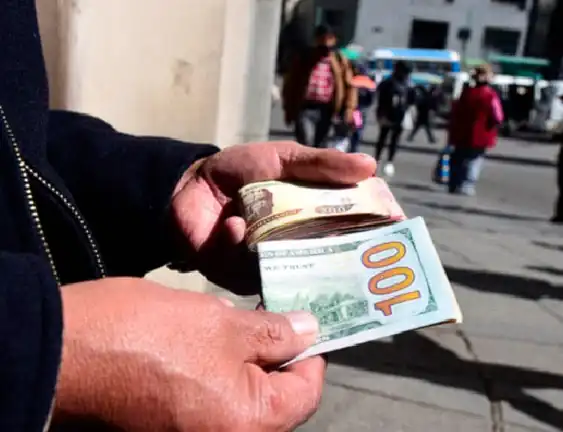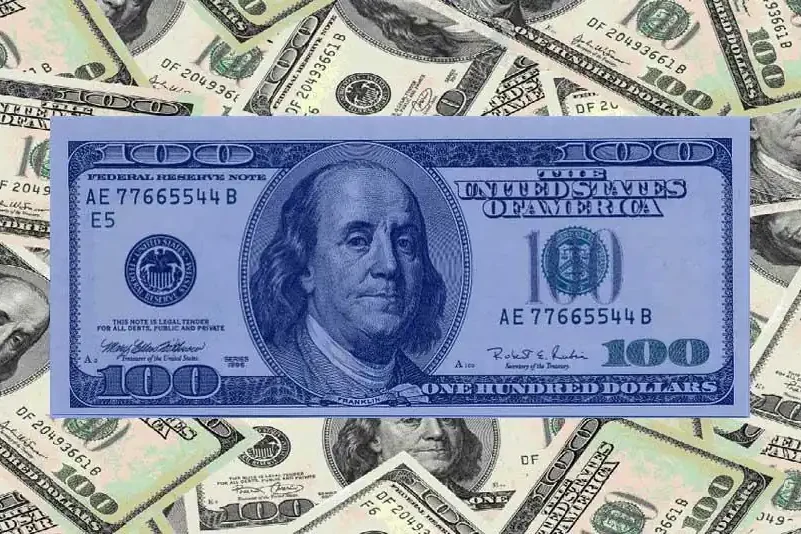In recent years, Bolivia has experienced a unique phenomenon in its currency market – the emergence of the Dollar Blue. This unofficial exchange rate has become increasingly important for Bolivians and foreigners alike, as it reflects the true value of the U.S. dollar in the country’s parallel market.
As economic pressures mount and official exchange rates struggle to keep pace, understanding the Dollar Blue in Bolivia has become crucial for anyone navigating the nation’s financial landscape. But what exactly is the Dollar Blue, and why has it become such a significant factor in Bolivia’s economy?
Dollar Blue in Bolivia Today
The Dollar Blue in Bolivia refers to the unofficial exchange rate for U.S. dollars in the country’s parallel or black market. This rate often differs significantly from the official exchange rate set by Bolivia’s central bank. The term “Blue” is borrowed from Argentina’s infamous “Dólar Blue,” which has long been a part of that country’s economic lexicon.
In Bolivia, the Dollar Blue has gained prominence due to several factors:
- Scarcity of official U.S. dollars
- Economic instability
- Government restrictions on foreign currency transactions
- Demand for dollars in cross-border trade
The Rise of Dollar Blue in Bolivia
The concept of Dollar Blue in Bolivia has gained traction as the gap between the official and parallel market rates has widened. In some cities, such as Oruro, which has strong trade links with Chile, the Dollar Blue rate has surpassed 11 bolivianos per dollar. In Santa Cruz, Bolivia’s economic powerhouse, the rate has exceeded 10.50 bolivianos, with an upward trend.

This divergence from the official rate highlights the increasing importance of the Dollar Blue in Bolivia’s economic landscape. It reflects not only the scarcity of dollars but also the public’s perception of the boliviano’s true value.
Factors Influencing the Dollar Blue Rate in Bolivia
Several key factors contribute to the fluctuations and overall trend of the Dollar Blue in Bolivia Today:
1. Economic Policies and Restrictions
Government policies restricting access to official foreign currency channels have led to increased demand in the parallel market. These restrictions, aimed at controlling capital outflow, have inadvertently fueled the growth of the Dollar Blue market.
2. Regional Economic Influences
Bolivia’s economic ties with neighboring countries, particularly Argentina and Chile, play a significant role in shaping the Dollar Blue rate. Cross-border trade and economic conditions in these countries can influence demand for dollars in Bolivia’s parallel market.
3. Domestic Economic Conditions
Factors such as inflation rates, economic growth, and political stability in Bolivia directly impact the value of the boliviano against the dollar, influencing the Dollar Blue rate.
4. Global Economic Trends
International economic conditions, including U.S. monetary policy and global commodity prices, can affect the demand for dollars in Bolivia and, consequently, the Dollar Blue rate.
The Role of Cryptocurrencies in Bolivia’s Dollar Blue Market
An interesting aspect of the Dollar Blue in Bolivia is its connection to cryptocurrencies. Unlike the traditional street-based dollar exchange, the Dollar Blue rate in Bolivia is increasingly influenced by the value of stablecoins, particularly USDT (Tether), which is pegged to the U.S. dollar.
This crypto-based valuation method offers several advantages:
- Greater accessibility and liquidity
- Reduced risk of handling physical cash
- Easier cross-border transactions
- More stable and transparent pricing mechanisms
However, it’s crucial to note that while the Dollar Blue in Bolivia Today may be influenced by cryptocurrency markets, it remains distinct from the official dollar rate and the physical dollar exchange on the streets.
Regional Variations in Dollar Blue Rates Across Bolivia
The Dollar Blue in Bolivia is not a uniform rate across the country. Different regions experience varying rates due to local economic conditions and proximity to borders. Here’s a breakdown of how the Dollar Blue rate varies across major Bolivian cities:
| City | Approximate Dollar Blue Rate (Bolivianos) | Key Influencing Factors |
|---|---|---|
| Oruro | 11+ | Strong trade links with Chile |
| Santa Cruz | 10.50+ | Economic hub, high demand for dollars |
| La Paz | 10.2 | Government presence, tourist influx |
| Cochabamba | 10.2 | Central location, diverse economy |
These regional variations highlight the importance of local economic conditions in determining the Dollar Blue rate in Bolivia Today. Travelers and businesses operating across different regions of Bolivia should be aware of these variations to make informed financial decisions.
Official Dollar Exchange Rate in Bolivia
| Currency | Buy Rate | Sell Rate |
|---|---|---|
| Dollar | 6.86 | 6.96 |
The disparity between the official dollar exchange rate and the Dollar Blue rate in Bolivia underscores the impact of regional economic conditions and market dynamics. While the official rate remains stable at 6.86 for buying and 6.96 for selling, the Dollar Blue rate fluctuates significantly across different cities. Factors such as trade links, economic activity, government presence, and tourism play crucial roles in these variations. Understanding these differences is essential for travelers and businesses to make informed financial decisions and optimize their currency exchanges.
⭐ How To Send Money To Bolivia From US ?
Implications of the Dollar Blue for Bolivia’s Economy
The existence and growth of the Dollar Blue market in Bolivia have significant implications for the country’s economy:
1. Economic Instability
The widening gap between official and parallel exchange rates can lead to economic instability and uncertainty, potentially discouraging foreign investment.
2. Inflation Concerns
A high Dollar Blue rate can contribute to inflationary pressures as importers may need to factor in higher currency costs.
3. Impact on Savings and Investments
Bolivians may increasingly turn to the dollar as a store of value, potentially weakening the boliviano and complicating monetary policy.
4. Cross-Border Trade Effects
The Dollar Blue rate can significantly impact cross-border trade, particularly with neighboring countries like Chile and Argentina.
Navigating the Dollar Blue Market in Bolivia
For those dealing with the Dollar Blue in Bolivia, whether as residents, tourists, or businesses, it’s important to navigate this market carefully:
- Stay Informed: Keep track of the current Dollar Blue rates across different cities.
- Use Trusted Sources: When exchanging currency, use reputable sources to avoid fraud.
- Consider Cryptocurrencies: Explore the use of stablecoins for more stable and accessible dollar-equivalent transactions.
- Be Aware of Risks: Understand that operating in parallel markets carries legal and financial risks.
- Plan Ahead: For travelers, plan your currency needs in advance to avoid last-minute exchanges at unfavorable rates.
The Future of Dollar Blue in Bolivia

As Bolivia continues to grapple with economic challenges and currency pressures, the future of the Dollar Blue in Bolivia remains uncertain but significant. Several factors will likely shape its trajectory:
- Government Policies: Future economic policies and currency controls will play a crucial role in determining the relevance and rate of the Dollar Blue.
- Regional Economic Integration: Increased economic integration with neighboring countries could influence dollar demand and availability.
- Technological Advancements: The growing role of cryptocurrencies and digital finance could reshape how the Dollar Blue market operates.
- Global Economic Trends: International economic conditions will continue to impact Bolivia’s currency market, including the Dollar Blue rate.
Understanding and adapting to the Dollar Blue in Bolivia Today is crucial for anyone involved in Bolivia’s economy. Whether you’re a resident, investor, or traveler, staying informed about this parallel currency market can help you make better financial decisions and navigate the complexities of Bolivia’s economic landscape.
As Bolivia’s economy evolves, so too will the role and significance of the Dollar Blue. By staying informed and understanding the factors that influence this parallel market, individuals and businesses can better position themselves to navigate Bolivia’s unique financial environment.
